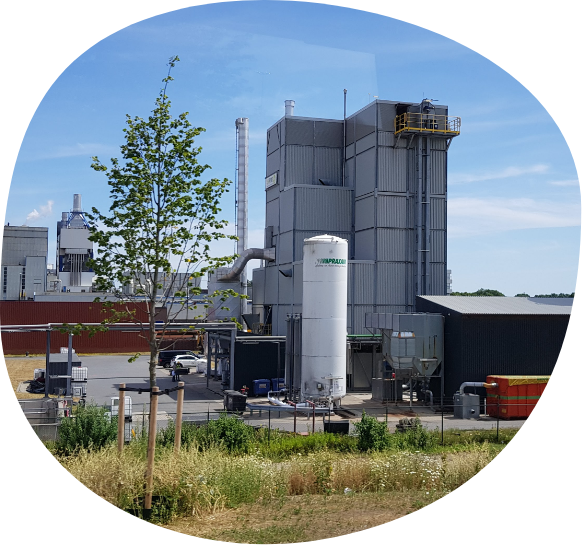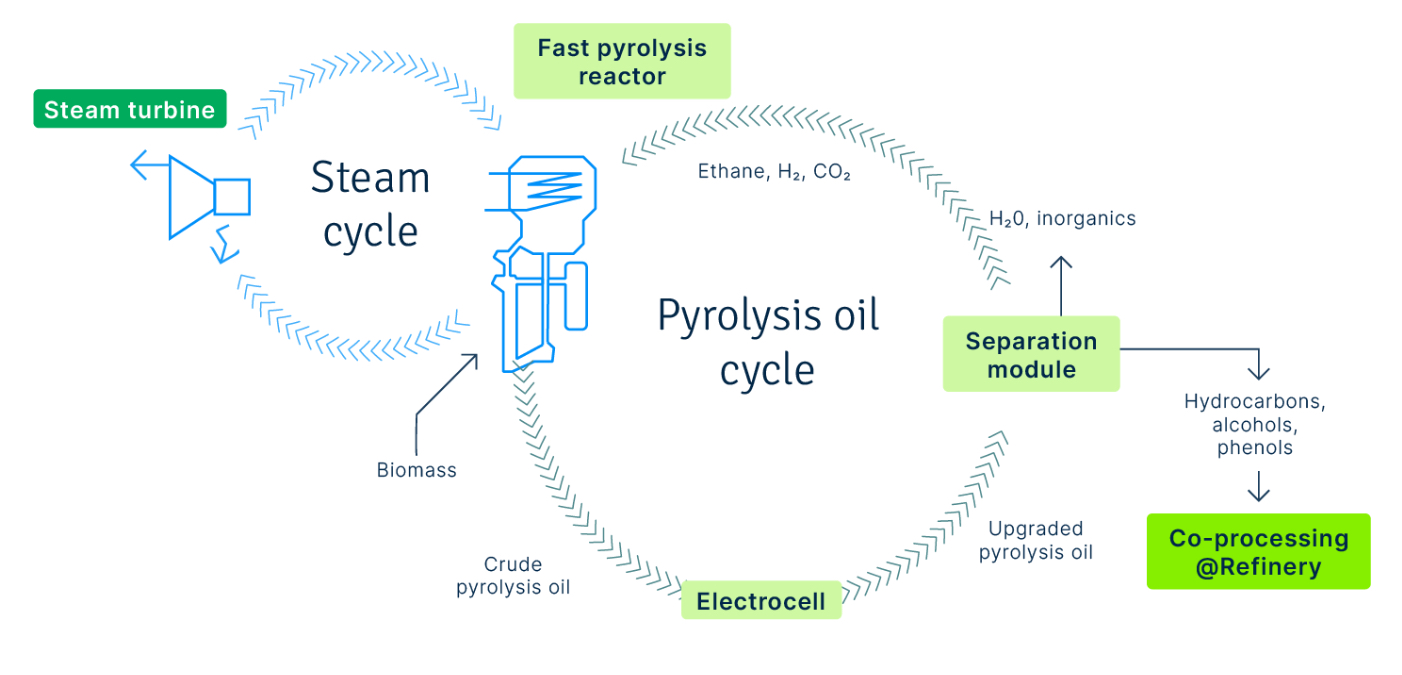Pyrolysis liquid
Pyrolysis oil is a liquid substance obtained in the pyrolysis process and subsequent cooling.
It is a complex blend of molecules usually consisting of more than 200 different compounds resulting from the depolymerisation of products treated in pyrolysis.
The latter is a thermochemical treatment applicable to any organic carbon-based product. In this treatment, material is exposed in a reactor to a temperature of about 200 degrees, and in the absence of oxygen goes through chemical and physical separation into different molecules.
Energy Source
The pyrolysis oil can be used in several applications to produce heat, electricity and cooling by adopting as input in technologies such as turbines, combustion and compression-ignition engines. Typically a pyrolysis system unit contains the equipment for lignocellulosic residues pre-processing, the pyrolysis reactor, and subsequent unit for downstream processing to produce heat, biochar and bio-oils (using fast pyrolysis). The eventual objective of pyrolysis is to yield high-value energy products for contending with and gradually supplanting non-renewable fossil fuels.


EBIO
The EBIO project aims to significantly reduce the costs for pyrolysis oil upgrading by using renewable electricity to drive simultaneous acid removal and conversion of unstable ketones and aldehydes. All, or a significant part of this electricity, is available at the site of the production of the liquids already. Obviously, a paired electrolysis approach combining acid conversion to ethane and CO2 at the anode and hydrogenation of mainly aldehydes/ ketones at the cathode, is the preferred option to upgrade pyrolysis oil.

